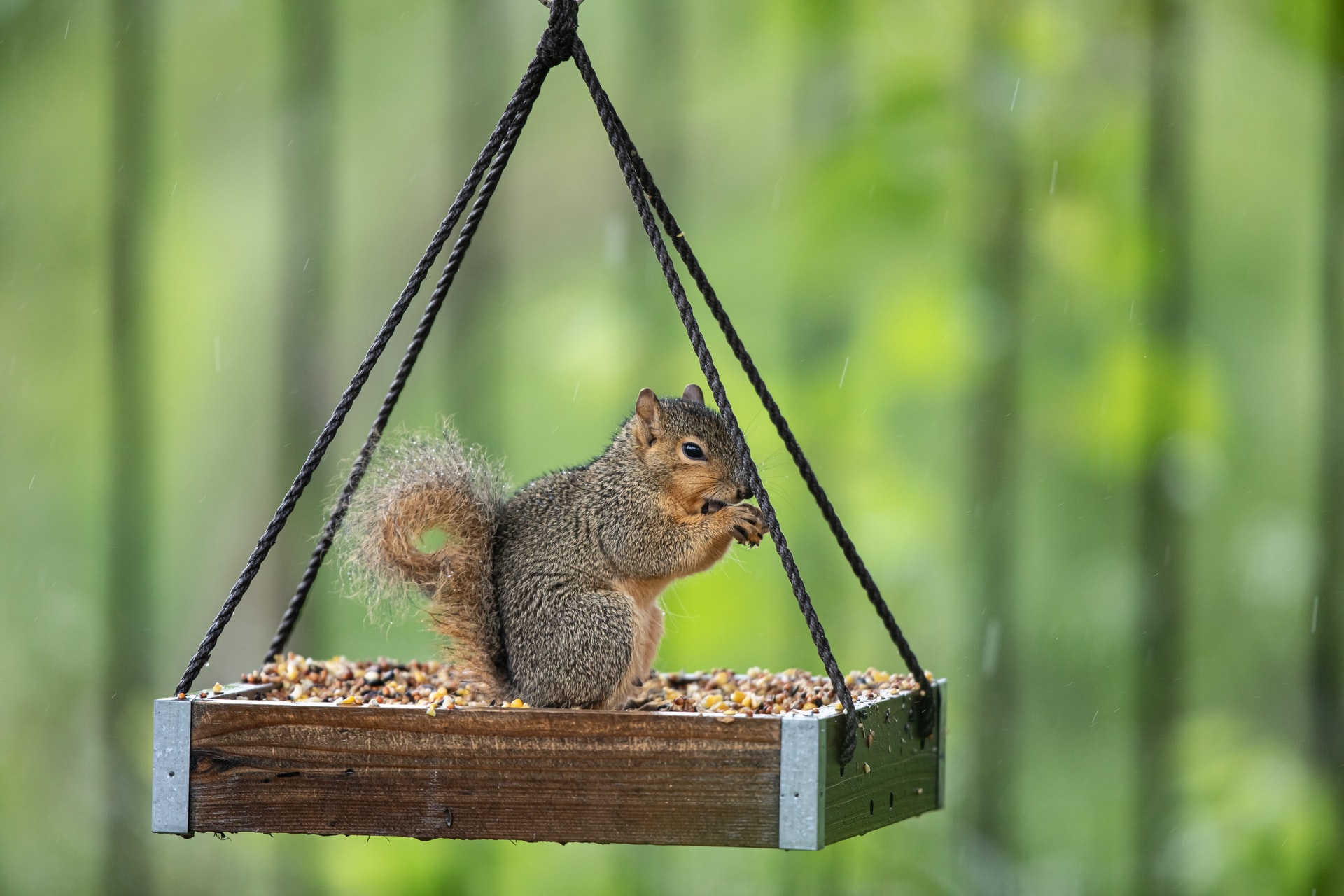
Lost your smartphone? Rabbits eating all your sunflowers? Can’t seem to find opportunities right for you? Sometimes doing citizen science can bring some unexpected problems. But take heart — whatever challenge you’re facing, you’re likely not the first one to deal with it.
We surveyed SciStarter’s users about the problems they’ve encountered while trying to do citizen science. We found seven problems that cropped up most often, and we’re going to collect them all here in one handy post, along with our tips for overcoming them. In no particular order:
1. Finding Accessible Activities Near Me
A number of SciStarter users lamented a lack of citizen science opportunities near them. Some reported mobility issues were keeping them at home, while others pointed to their more remote geographic locations. The good news is: On SciStarter, the majority of projects aren’t tied to a specific geographic location.
Using the Project Finder, when you type in your location you’ll find projects that are near you and projects that can be completed from anywhere. Try selecting “exclusively online” or “at home” from the “projects to do while…” menu, or pick “can be done online” from the “only projects that…” menu. There are so many options that can be done from any location, like Stall Catchers, NASA GLOBE Cloud Gaze and Instant Wild: Lewa, you’re sure to find one that’s right for you!

2. Getting Past Technical Difficulties
Some users reported having trouble logging into websites, struggling to figure out apps or even wondering why their SciStarter dashboard wasn’t logging their progress from certain projects. These types of problems can be easy fixes, but since the source of each issue is different for each person, there’s no one-size-fits-all solution.
But we can still point you in the right direction. If you run into trouble with a project’s app or website, reach out to the project leaders and let them know. On each project page, there’s a “message project” button in the left hand menu bar — this will send an email straight to the project leader. If that doesn’t work, or if your issue is related to your SciStarter dashboard or something else on SciStarter.org, email us at info@SciStarter.org and we’ll help you out.
3. Finding Projects Suitable for Kids
Some citizen scientists tried out a few projects with younger kids — some in classroom or library settings — but the projects either took too long and the kids lost interest, or they were too challenging in general. One anonymous user reported they had a hard time “finding simple projects that are accessible to upper elementary students (4th-6th grade).” Kailyn C. from New York said, of an app-based project, “the app can be a little clunky to use, which makes it harder for an impatient 7-year-old.” Cheryl H. from New Jersey, who teaches 9th grade physics and 11th grade biology, explains “some of my students get frustrated very easily.”
Luckily, there are plenty of citizen science projects perfect for kids, like Seek, Project Squirrel and Questagame. To find citizen science projects that are a good fit for a younger audience, we recommend starting out with projects that we’ve already vetted for different age groups, which you can find on our Education Page. Here you’ll find a number of great projects, many of them SciStarter Affiliates, parsed out by their appropriate grade levels.
4. Limited Access to Devices or Internet
“I have lost my smartphone…”
“Lack of adequate broadband…”
“Not enough access to smartphone devices…”
“Either I can’t load [the projects] on my poor internet, or I lose a bunch of work when the internet drops…”
A number of SciStarter users reported being hindered by technology. Nearly every project today has an online component — you have to submit your important work somehow! — and many projects are totally reliant on having a device and internet connection that can support the website or app.
Reliance on apps can be particularly challenging when working with young kids who don’t have phones, or older kids whose personal phones you’d rather stayed far out of sight. An anonymous librarian put it this way: “Many of the projects are focused on the use of technology (i.e., apps) which can be difficult to facilitate when working with a large group of children. We can’t count on parents being both present and willing to download an app.”
One app-avoiding trick is to look for projects that can be done with offline data sheets. Many of the projects on SciStarter’s Education page fit this bill, and either have datasheets provided (like The Great Sunflower Project) or have data entry forms that you could make into your own offline datasheets (like Sourdough for Science). Plenty of other projects may have worksheets linked (typically under “Additional Resources”) on their project page, though it may take some browsing to find them. You’ll still need to upload your data eventually, but this way you can still complete a project without logging on.

If an internet connection is an issue, check your local library to see if they offer free internet access. Many also loan computers and smart phones and, increasingly, citizen science kits with everything you need to participate in six projects!
Teacher Cheryl H. from New Jersey shared another idea for educators wanting to do app-based projects: “A teacher had collected old smartphones, wiped them and downloaded different apps to use. I think I might try this next year so the students wouldn’t have to download apps onto their personal phones.”
5. Facilitating Projects with Limited Resources
A number of educators who answered our survey reported that funding was often a roadblock for them. One anonymous user said, “the price of materials can be prohibitive for starting a project,” and another mentioned having trouble with “fees.”
Participating in citizen science should never be expensive, and the vast majority of the time, it’s free! That said, some projects do require certain tools or materials (which you can find in our tools database) to participate, which can add up fast especially if you’re equipping an entire classroom. For example, you’ll need a rain gauge for CoCoRaHS, a telescope for Smartphone Astrophotography and even some amino acids for Ant Picnic. But for many others, all you need is a device with the app downloaded, like ISeeChange, Never Home Alone or NASA GLOBE Observer. Others still you can do with just a browser connection, like Budburst, TreeSnap or online-only projects on the Zooniverse. Each project page on SciStarter lists the needed materials, so you can see what you need right away.
If you’re a librarian looking to build a library kit for a citizen science project, once you have an idea of what the kit components and related programming might cost, consider reaching out to your state library to inquire if they will provide grants to support your purchases and programs through the Grants to States program.
6. Avoiding Interference from Mother Nature
There are so many engaging citizen science projects that get you outside observing nature. But observing things like plants, animals and the weather does mean you have to deal with, well, plants, animals and the weather! We’ve seen wind blow away a class’ ZomBee Watch bee traps, mosquitoes move into someone’s CoCoRaHS rain gauge, rabbits nibbling plants and squirrels gorging on bird feeders.
Some projects just aren’t great options if the weather’s not right. For instance, please don’t go outside in thunder and lightning to collect observations for any citizen science project! Sometimes, you just have to wait until conditions improve, and do what you can as a contingency plan (like trying out a project tagged “exclusively online” or “at home”).
For other issues, we can offer more concrete suggestions. If you’ve got mosquitoes moving into your rain gauge, that means you’re not emptying it often enough. Every 24 hours is recommended for any rain gauge owner, and is a necessary part of the daily precipitation readings for CoCoRaHS. If you keep that up, you won’t get mosquitoes — it takes at least 24 hours for newly laid eggs to hatch. (If you forgot to dump out your rain gauge and have mosquito larvae in it, log the observation with GLOBE Observer: Mosquito Habitat Mapper before you dump it!)
If hungry mammals are your problem, physical barriers are your best bet. Try a squirrel-proof bird feeder, add a baffle below your feeders or move your feeder to a less accessible location (squirrels are excellent jumpers). Wire rabbit fencing from your local hardware store works well at keeping hungry bunnies away from delicious plants (they especially love to eat tender new shoots in spring).
7. There’s Too Much Citizen Science to Be Done!
And last but not least, in the words of another anonymous user, there’s the best problem to have of them all: “There’s just not enough time in a day to contribute to these nice activities.”
We can’t make more time in the day, we can only help connect you to more great citizen science opportunities!
Bonus: Video Solutions
We not only surveyed users about their challenges, but asked what solutions they were already aware of. Many of these are already mentioned above, but there’s one more we didn’t want you to miss:
“Something that is very helpful to me as a teacher using SciStarter are any video tutorials on doing the projects, especially if they show step-by-step directions. If I could see a video of someone actually doing the steps of the project that would be extremely helpful,” says Cheryl H. from New Jersey.
We’ve collected these how-to videos on our YouTube channel — check them out!
And as a reminder: You can always click the “message project” button in the left hand menu bar on each project page to ask project scientists your questions or share ideas to improve the project. (You have to be logged in to see the button.) Project leaders: You can easily message SciStarter users who joined your project using the messaging tools in your project dashboard.
Good luck!

